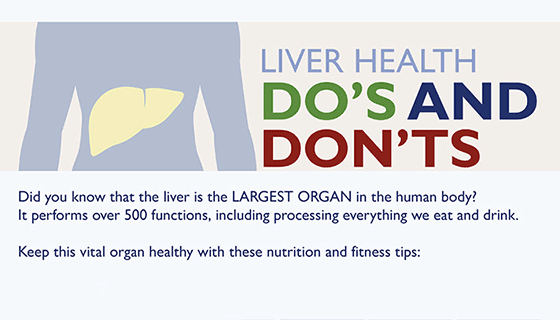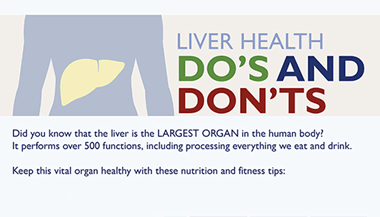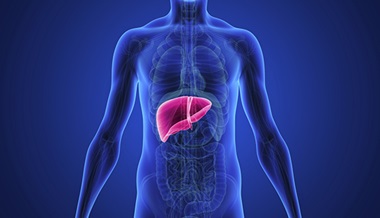Common Characteristics of Liver Disease
What are some common liver disease symptoms?
When diagnosing liver disease, the doctor looks at the patient's symptoms and conducts a physical examination. In addition, the doctor may request a liver biopsy, liver function tests, an ultrasound, a computed tomography (CT) scan, and/or a magnetic resonance imaging (MRI) scan.
Some common liver disease symptoms include the following, each of which are described briefly below:
- Jaundice. A yellowing of the skin and eyes.
- Cholestasis
- Liver enlargement
- Portal hypertension
- Esophageal varices
- Ascites. A fluid buildup in the abdominal cavity.
- Liver encephalopathy
- Liver failure
What is jaundice?
Jaundice is a yellow discoloration of the skin and whites of the eyes due to abnormally high levels of bilirubin (bile pigment) in the bloodstream. Urine is usually dark because of the bilirubin excreted through the kidneys. High levels of bilirubin may be attributed to inflammation, or other abnormalities of the liver cells, or blockage of the bile ducts. Sometimes, jaundice is caused by the breakdown of a large number of red blood cells, which can occur in newborns. Jaundice is usually the first sign, and sometimes the only sign, of liver disease.
What is cholestasis?
Cholestasis means any condition in which bile flow is reduced or stopped. "Chole" refers to bile and "stasis" means "not moving." Bile flow may be blocked inside the liver, outside the liver, or in both places. Symptoms may include:
- Jaundice
- Dark urine
- Pale stool
- Easy bleeding
- Itching
- Ascites
- Chills
- Pain from the biliary tract or pancreas
- Enlarged gallbladder
Some causes of cholestasis include the following:
- Hepatitis
- Alcoholic liver disease
- Primary biliary cirrhosis
- Drug effects
- Hormonal changes during pregnancy
- A stone in the bile duct
- Bile duct narrowing
- Bile duct cancer
- Pancreatic cancer
- Inflammation of the pancreas
What is liver enlargement?
Liver enlargement is usually an indicator of liver disease, although there are usually no symptoms associated with a slightly enlarged liver (hepatomegaly). Symptoms of a grossly enlarged liver include abdominal discomfort or "feeling full."
What is portal hypertension?
Portal hypertension is high blood pressure in the portal vein, which supplies the liver with blood from the intestine and spleen. Portal hypertension may be due to increased blood pressure in the portal blood vessels, or resistance to blood flow through the liver. Portal hypertension can lead to the growth of new blood vessels (called collaterals) that connect blood flow from the intestine to the general circulation, bypassing the liver. When this occurs, substances that are normally removed by the liver pass into the general circulation. Symptoms of portal hypertension may include:
- Ascites
- Development of varicose veins. Varicose veins (esophageal varices) develop most commonly at the lower end of the esophagus and in the stomach lining, although they can develop anywhere from the mouth to the anus.
What are esophageal varices?
Esophageal varices are dilated blood vessels within the walls of the lower part of the esophagus that are prone to bleeding. They can appear in people with severe liver disease. A diseased liver can cause portal hypertension, which is high blood pressure in the portal vein. The portal vein supplies the liver with blood. Over time, this pressure causes blood vessels to grow, called collateral blood vessels. These vessels act as channels to divert the blood under high pressure. The extra pressure in these vessels causes them to dilate and become tortuous. These vessels can eventually reach the lower esophagus and stomach and are prone to rupture. The rupture can lead to significant blood loss from vomiting or from lost blood passing through the gastrointestinal tract. Symptoms of esophageal varices may include:
- Painless vomiting of blood
- Black, tarry or bloody stools
- Decreased urine output
- Excessive thirst
- Light-headedness
- Paleness
- Anemia. A condition that indicates a low red blood cell count.
What is ascites?
Ascites is fluid buildup in the abdominal cavity caused by fluid leaks from the surface of the liver and intestine. Ascites due to liver disease usually accompanies other liver disease characteristics, such as portal hypertension. Symptoms of ascites may include a distended abdominal cavity, which causes discomfort and shortness of breath. Causes of ascites may include the following:
- Liver cirrhosis (especially cirrhosis caused by alcoholism)
- Alcoholic hepatitis
- Obstruction of the hepatic vein
Ascites can also be caused by nonliver disorders.
What is liver encephalopathy?
Liver encephalopathy is the deterioration of brain function and damage to the nervous system due to toxic substances building up in the blood, which are normally removed by the liver. Liver encephalopathy is also called portal-systemic encephalopathy, hepatic encephalopathy, or hepatic coma. Symptoms may include:
- Impaired consciousness
- Changes in logical thinking, personality, and behavior
- Mood changes
- Impaired judgment
- Drowsiness
- Confusion
- Sluggish speech and movement
- Disorientation
- Loss of consciousness
- Coma
- Seizures (rare)
- Muscle stiffness or tremors
- Uncontrollable movement
What is liver failure?
Liver failure is severe deterioration of liver function. Liver failure occurs when a large portion of the liver is damaged due to any type of liver disorder. Symptoms may include:
- Jaundice
- Tendency to bruise or bleed easily
- Ascites
- Impaired brain function
- General failing health
- Fatigue
- Weakness
- Nausea
- Loss of appetite
- Diarrhea






